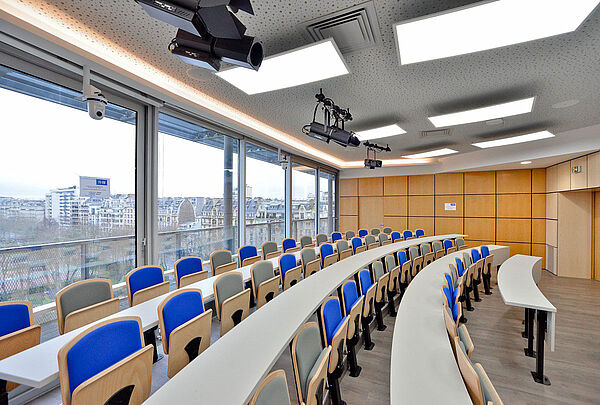Syllabus
The academic year starts in September with 2 weeks of Preliminary Courses that are not followed by exams and are intended as a quick review of tools that students should mostly already know from previous studies.
During the M2 year students must pass the exams of 7 courses freely chosen in the list below, the only constraint being that at least 2 courses should be in the sublist of Fundamental Courses. It is also possible to validate up to 2 courses of other masters, prior approval from the program directors.
In addition, students must do a research internship under the supervision of a research director: the outcome will be a written manuscript (master thesis) and an oral discussion.
Each student will be followed by a scientific tutor who will orientate for the choice of the courses and help to find a suitable director for the research internship.
For the updated list of courses, see here
Internships and Supervised Projects
During the second semester, students will do a supervised research project (internship) lasting between 16 and 20 weeks.
The subject of the internship will be freely chosen by the students according to their interest. If needed, tutors will orient in identifying a suitable research subject and/or project supervisor.
We warmly encourage our students to visit the research pages of the laboratories associated to the master (Ceremade - PSL and DMA - PSL) as well as of other research laboratories to identify potential directors and contact them directly. Students who want to conduct their research internship outside the Paris region can apply for financial assistance from the Paris Mathematical Sciences Foundation (more details here).
With prior written approval from the program director, the research internship may be replaced by an internship in a private company, as long as it has a sufficient research component.
Research-driven Programs
Training courses are developed in close collaboration with Dauphine's world-class research programs, which ensure high standards and innovation.
Research is organized around 6 disciplines all centered on the sciences of organizations and decision making.
Learn more about research at Dauphine


